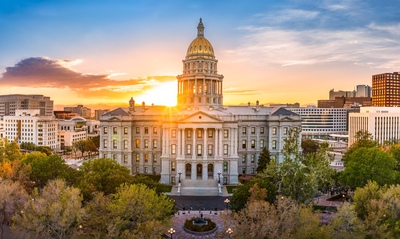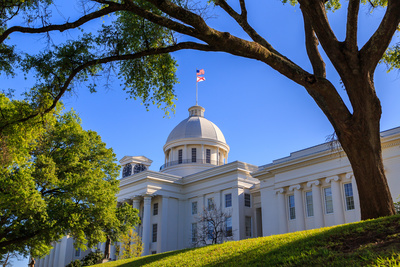
Health Care & Wellness
Rural Health Transformation Program 101 (Federal Grants to States to Improve Rural Healthcare)
December 18, 2025 | Brock Ingmire
April 16, 2020 | Morgan Scarboro, Ryan Maness

Key Takeaways:
States, without question, will face significant fiscal challenges as a result of the COVID-19 pandemic. Rhode Island General Treasurer Seth Magaziner warns that his state is “weeks, not months” away from running out of money. California Governor Gavin Newsom (D) says the pandemic could wipe out the state’s $21 billion surplus. Similarly, a recent study in Illinois warned that COVID-19 could cost the state $28 billion. Every state is going to be affected and policymakers will have to make hard budget choices moving forward, but some states are better positioned than others.
Given the unique nature of our current economic situation, it’s difficult to predict exactly when states will be forced to address their short-term budget woes. This is especially true in light of the additional federal funds which have already been allocated to states, with the potential for more on the way. But reviewing a few fundamental data points helps sort states into those which are closest to the edge of a fiscal cliff and those which have more time to work out longer-term budget solutions.
In order to determine which states are more likely to face immediate budget issues — between now and early summer — we examined a combination of three factors: (1) each state’s rainy day fund reserves, (2) unemployment rate (as of April 9, 2020), and (3) whether the state has finalized a budget for the current period. Each of these factors are indicators of the likelihood that a state will be forced to act more quickly to address fiscal problems resulting from the coronavirus-induced economic contraction. We condensed these factors into a single score for each state, and then ordered the states based on this score from “more likely to face short-term budget issues” to “less likely.” (Note: Not every state technically has a rainy day fund, but for clarity, we are referring to all budgetary reserves or residual ending balances as “rainy day funds.”)
The heat map below highlights the states that are more likely to face immediate pressure to address fiscal shortfalls in the wake of the COVID-19 outbreak. Darker blue states are more likely to face immediate budget pressure mainly due to lower rainy day fund balances, higher unemployment rates (an indicator of greater negative economic impact), and lack of an adopted budget for their upcoming fiscal year. Grey states are less likely to face significant pressure in the short term based on these factors.

Our analysis shows Kentucky and Pennsylvania are the states most likely to face immediate budget problems. Both states lack a sufficient rainy day fund, have higher unemployment rates, and have not yet finalized a budget for FY 2020-21. Kentucky has faced a significant fiscal imbalance in the recent past, making it difficult for the state to build up its rainy day fund (it is currently 2.6 percent of general fund operating costs), and it has an unemployment rate of 11.9 percent. Although Pennsylvania has been trying to build up its reserves, the state still has only enough money to cover its costs for a few days — and the state has an unemployment rate of 13 percent (one of the highest in the nation). These conditions make both of these states very susceptible to budget challenges in the immediate future.
Six states fall in the next highest risk tier: Arkansas, Hawaii, Illinois, Louisiana, New Jersey, and New York. The COVID-19 pandemic has hit New York particularly hard, leading to soaring unemployment rates of over 11 percent. Coupled with a rainy day fund that is only prepared to cover a few weeks of operating costs, the state will face financial tension in the short-term. However, because New York has already adopted a budget for the current period, lawmakers will not be legally obligated to confront the budget situation immediately, though they may opt to pass a supplemental spending bill if the situation becomes sufficiently dire. Illinois has also been in a fiscal crisis for several years, and it currently does not have a rainy day fund that is sufficient to cover even a few days worth of the state’s costs. Illinois lawmakers also haven’t finalized a budget at this point. Illinois’ unemployment rate falls in the mid-range of states. Similarly, Arkansas, Hawaii, Louisiana, and New Jersey should be monitored closely due to their potential to quickly tip into the realm of deep fiscal challenges.
Several other states (Massachusetts, Michigan, Montana, Rhode Island, Vermont, and Wisconsin) have some risk factors for short-term budgetary issues and should be monitored, but are not, according to our metrics, among the most at immediate risk.
Readers may notice that some of the least-at-risk states in the short term are states heavily dependent on severance taxes, such as Wyoming, North Dakota, and Alaska. Though these states will almost certainly face a long-term budget crisis due to the struggling energy market, they all have very robust rainy day funds to see them through a fiscal crisis in the short term. Whether they choose to use those funds is a political question.
States were evaluated based on the following three factors.
Health of Rainy Day Fund. Perhaps the most important factor in determining how well a state can weather a short-term economic storm is the health of its rainy day fund. A strong reserve fund can provide a temporary buffer against the need to cut spending or raise new revenue during a fiscal downturn. When ranking the health of state rainy day funds, however, it is important to not simply compare the balance of one state to another, but rather to consider how it compares to the state’s overall expenditures. For example, a $2 billion reserve fund would be more impactful in Wyoming (which enacted a $2.9 billion biennial budget in 2018) than in California (which enacted a $214.8 billion annual budget last year). In determining whether a rainy day fund was “healthy” or not we relied on an established best practice that states maintain at least five percent of their total expenditure in reserve and preferably more than 16 percent (or approximately two months of operating expenditure). This variable is the most heavily weighted in our analysis because we believe it is the most accurate predictor of how well states can deal with a fiscal crisis in the short term. Utilizing data provided by the Tax Foundation, we found that 12 states fell below the five percent threshold (Arkansas, Florida, Hawaii, Illinois, Kansas, Kentucky, Louisiana, Montana, New Jersey, New York, Pennsylvania, and Wisconsin). In other words, these states have the lowest ability to bear the brunt of short-term budgetary issues. Conversely, five states have healthy reserves above 16 percent of expenditures (Alaska, New Mexico, North Dakota, West Virginia, and Wyoming).
Unemployment Claims Rate. The jump in unemployment claims have grabbed national headlines in recent weeks and, while every state has seen a rise in unemployment, some have been harder hit than others. A higher unemployment rate suggests many things: that consumers are likely slowing their spending and that there will be reductions in sales tax revenue, and lower income and wage withholding, among other indicators of a struggling economy. A clear look at the economic impact on each state will likely not be available until the public health crisis begins to subside, but unemployment claims data can give us an idea of which states are the hardest hit so far. In this analysis, however, we are less concerned about the revenue effect of state unemployment payouts directly (we predict federal action will alleviate some of that burden, at least in the short-term) than we are at looking at unemployment as a proxy for negative economic impact by state. We used the April 9, 2020, data from the U.S. Department of Labor to calculate unemployment insurance compensation claims as a percentage of the civilian labor force. Because rates across the board are rising in states, we are scoring this variable on a relative basis. States with the highest unemployment rate pose the highest risk under this variable (states with rates over 11 percent). However, it is important to note that because states face a historic surge in unemployment claims, there are likely some reporting issues in states that could affect our analysis; we are using the most up to date data currently available from the U.S. Department of Labor.
State Budget Status. States that have not yet adopted a fiscal year 2020-21 budget may face greater challenges as revenue estimates are dropping just as budgets are being finalized. Thus, there may be a more immediate mix of revenue increases and spending cuts required. States that passed their budgets before the pandemic hit may not be legally required to immediately reckon with the new reality. In other words, they likely have time to gather data, plan, and return for a special legislative session later in the year giving them time to evaluate the full extent of the fiscal impact. Some states are already addressing this challenge in unique ways, such as by extending the current fiscal year (e.g., New Jersey) or considering partial year budgets. Budget processes, which in January seemed smooth and easy in a time of robust economic growth, will suddenly be very difficult, made more so by the fact that many legislatures have recessed their legislative session to slow the person-to-person spread of COVID-19 (read our full analysis of state budget statuses here).

December 18, 2025 | Brock Ingmire

December 15, 2025 | Mary Kate Barnauskas

November 5, 2025 | Mary Kate Barnauskas